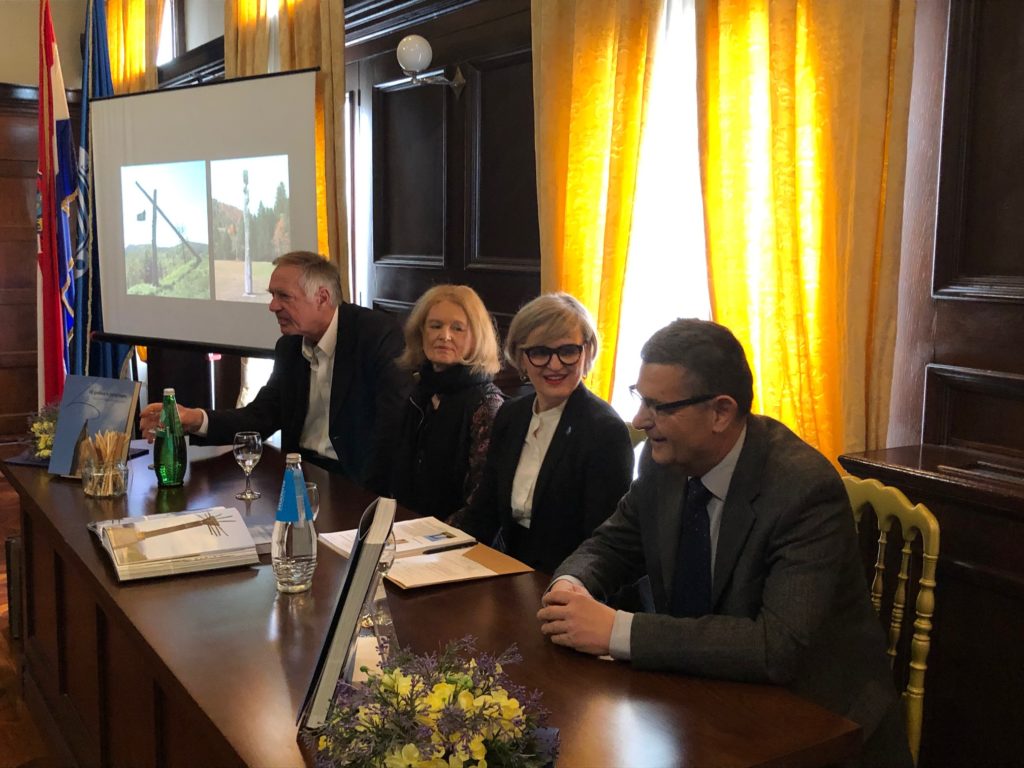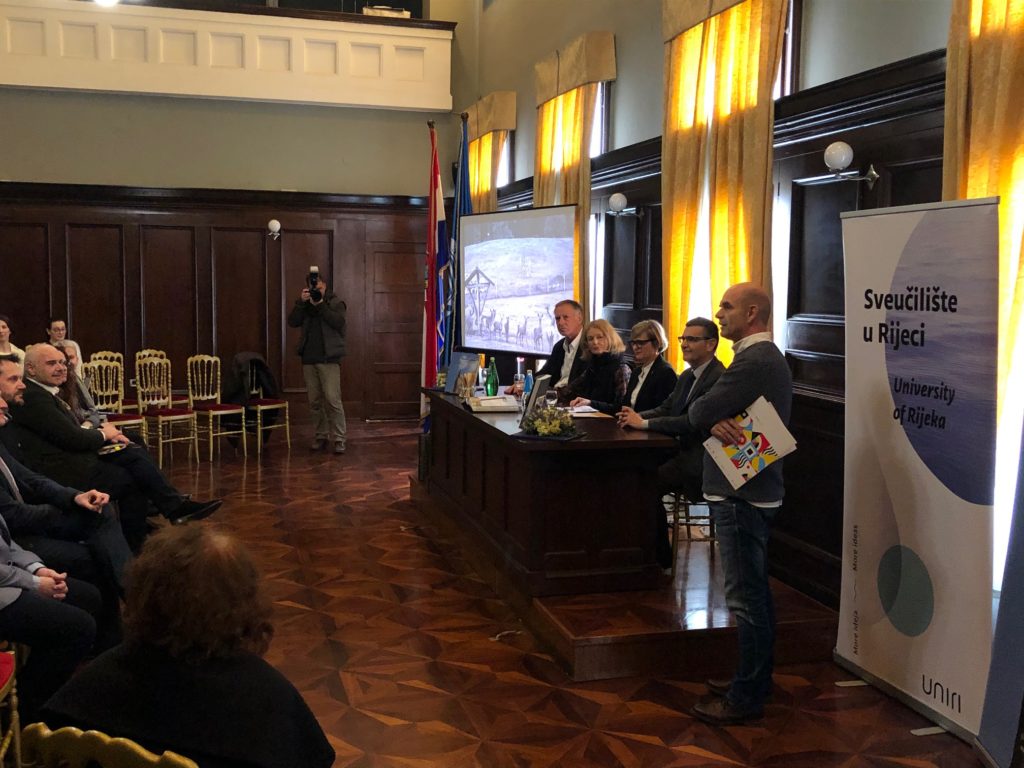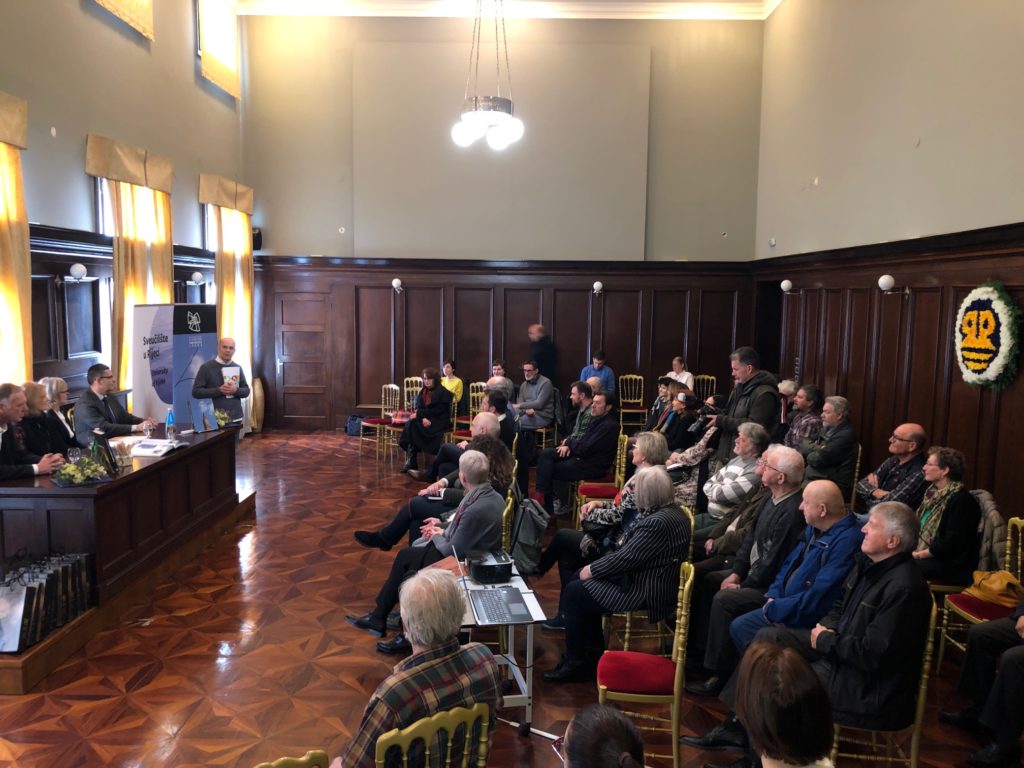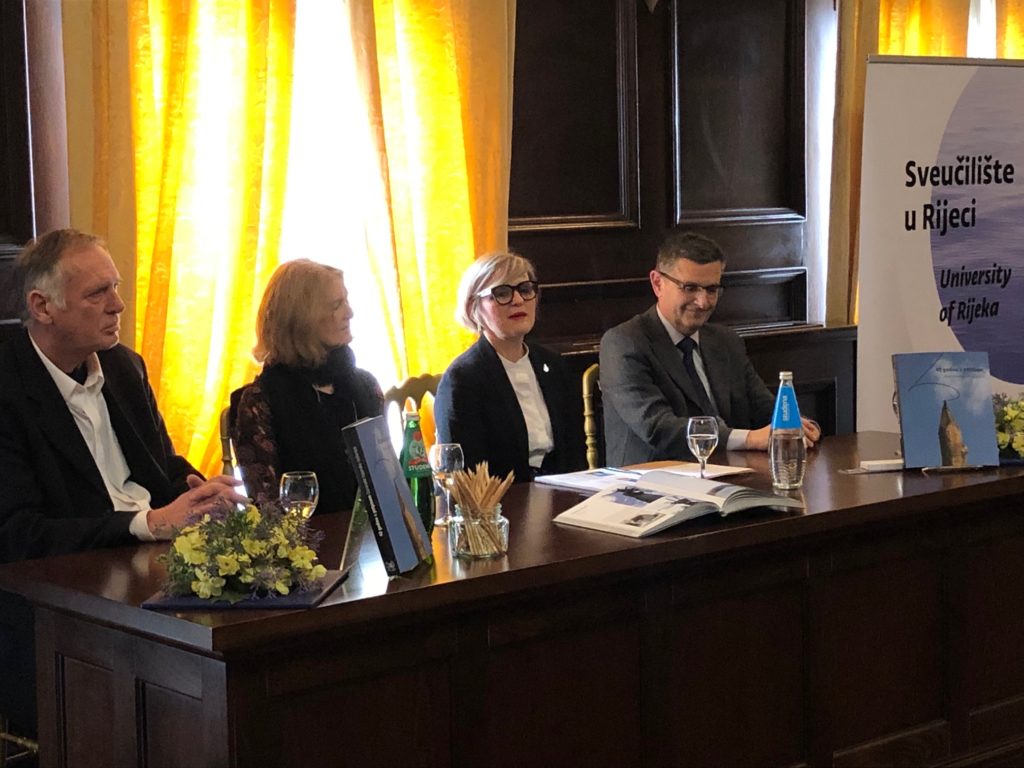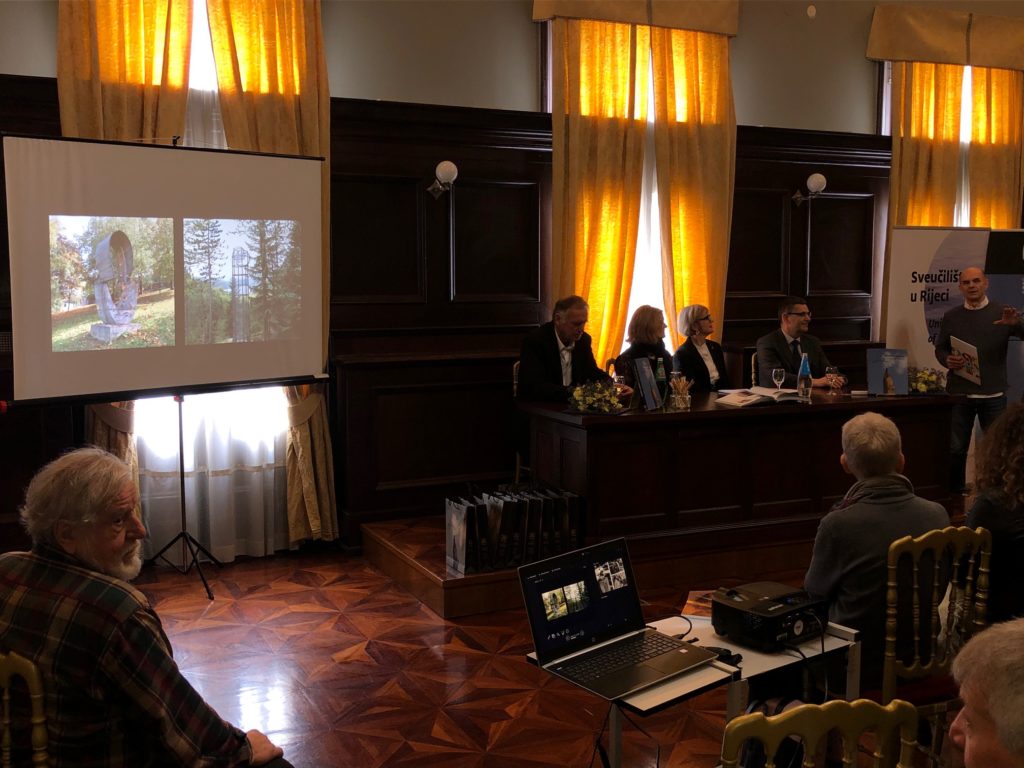A monograph entitled ”40 Years with Signature” was presented at the Aula Magna hall on Wednesday, March 4th, 2020 at the University of Rijeka Rectorate, marking 40 years of existence of Gorski Kotar Sculpture Workshop.
The monograph was presented by:
– Prof. Snježana Prijić-Samaržija, Ph.D., University of Rijeka Rector
– Mr. Milutin Burić, editor
– Ms. Branka Arh, author
– Mr. Berislav Valušek, author.
The presentation was moderated by Mr. Josip Krmpotić.
Mr. Petar Mamula, Deputy Head of the Primorje-Gorski kotar County, greeted everyone present on behalf of the Primorje-Gorski kotar County and its Head, Mr. Zlatko Komadina. Also present at the presentation was Mr. Toni Štimac, Mayor of Lokve.
Madam Rector Prijić-Samaržija held the introductory speech: “I am pleased that we have the opportunity to present this monograph at the Rectorate. I hope that in the future Gorski kotar Sculpture Workshop will collaborate even more with the Academy of Applied Arts and the University of Rijeka. I also welcome the initiative proposed by Deputy Head Mr. Petar Mamula, stating that the University of Rijeka should collaborate more with Gorski kotar. I am certain that we could be more present in Gorski kotar by organizing summer schools and similar activities. Congratulations to the Workshop on this important jubilee and monograph.”
Mr. Milutin Burić, President of the Workshop, also addressed the audience: “This book encompasses all of our artistic accomplishments. Over the years, all of us put a lot of love, work and effort into the works. I want to thank everyone who participated. During these 40 years, the workshop gathered 100 participants, 82 sculptors (some of them participated more than once), and they have created 107 sculptures. The Workshop was created in 1979, under the aegis of the Tourist Board Omladinsko jezero in Lokve. Since our sculptures are made out of wood, which is not the most durable material, especially taking into account the climate of Gorski kotar, we needed to create photographic documentation of every sculpture, because many of them were in an advanced state of decomposition, and they had to be taken out of the public space. Luckily, they were all saved from oblivion in this monograph.”
